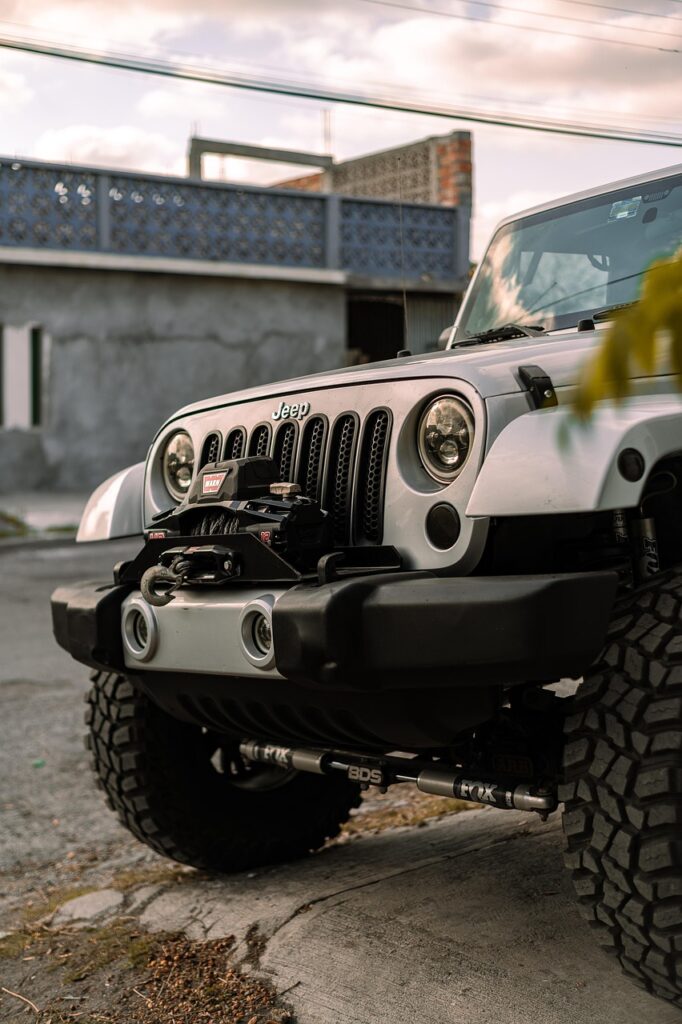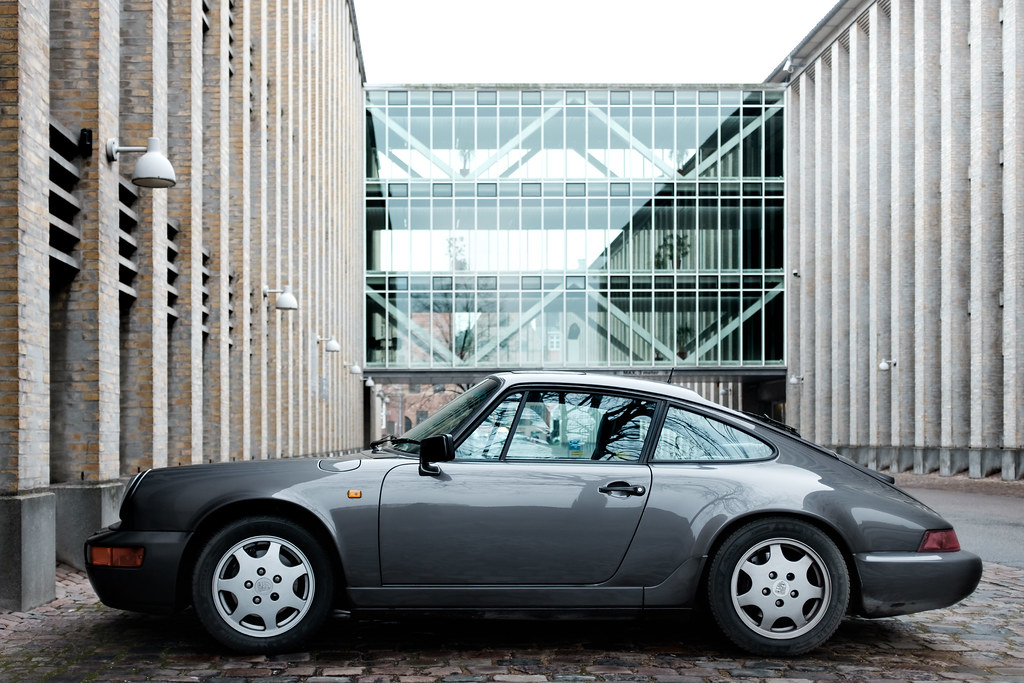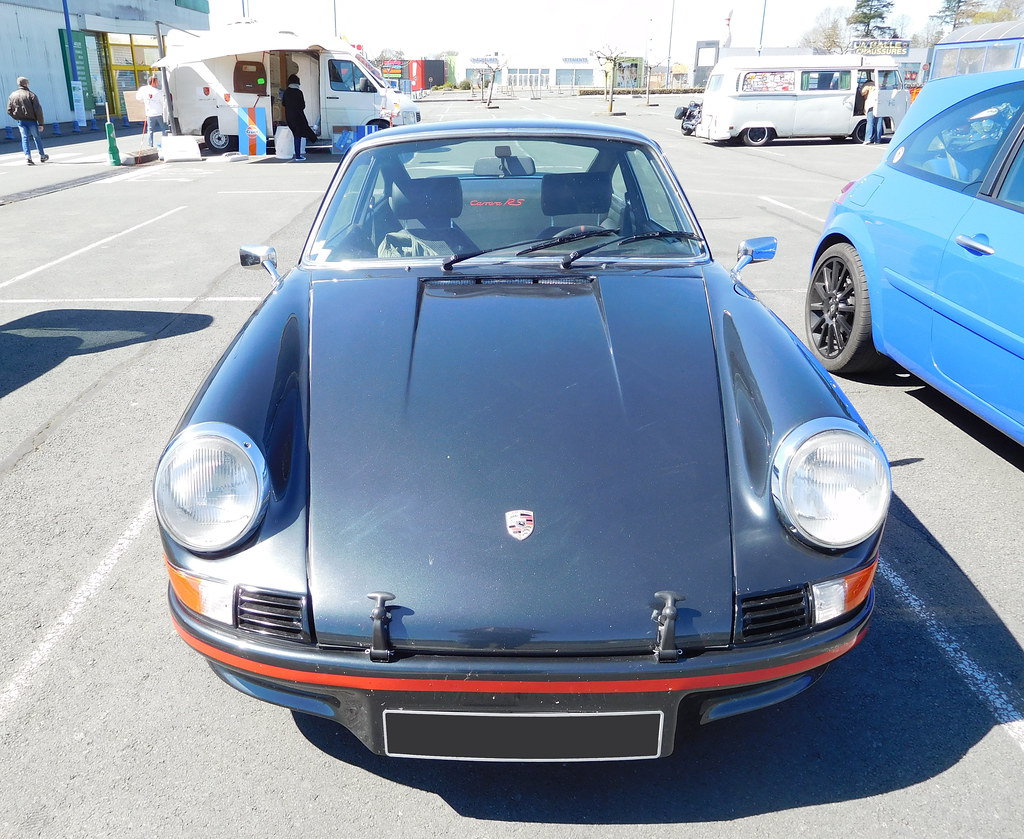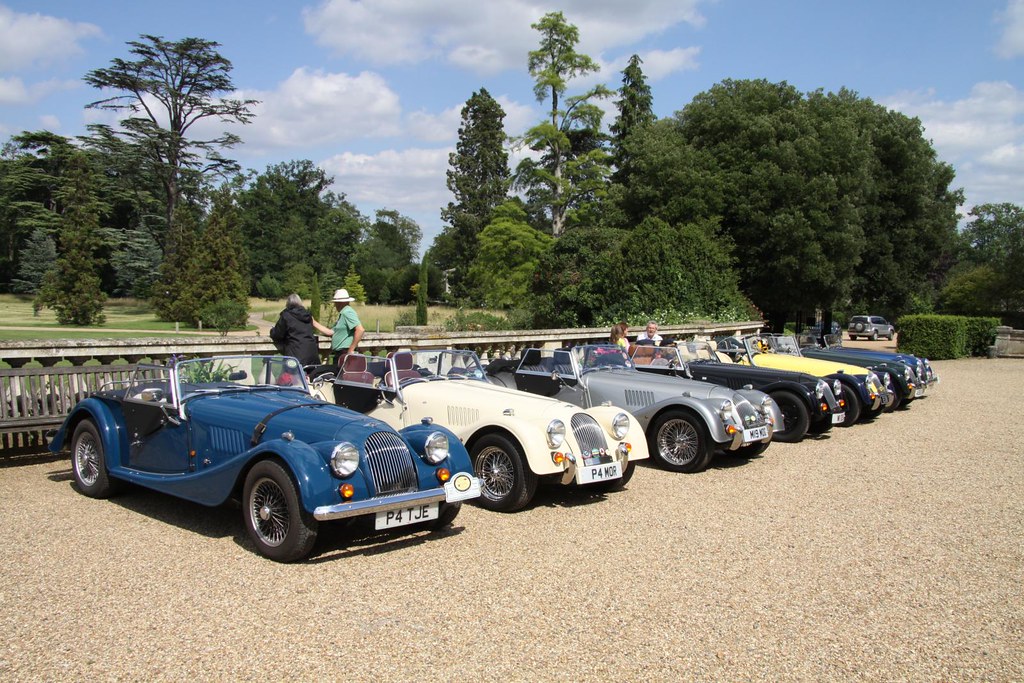
The pursuit of exhilarating performance on the track doesn’t have to be an exclusive endeavor reserved for those with deep pockets and corporate sponsorships. Indeed, the very essence of track day events lies in their accessibility, offering an unparalleled blend of fun and thrill to a wider audience. The fundamental ingredient for unlocking this experience is often an affordable track car – a machine that proves you don’t need an unlimited budget to carve corners and chase apexes with genuine enthusiasm.
Defining what makes an “affordable track car” can vary, but the core recipe remains consistent: balanced chassis dynamics, adequate power delivery, and the crucial durability to withstand repeated high-stress sessions. The real magic, however, lies in unearthing legitimate track day gems that deliver authentic performance without the hefty financial demands typically associated with newer, high-spec sports cars. It’s about smart choices, understanding value, and tapping into a vibrant aftermarket scene to maximize every dollar.
This comprehensive guide shines a spotlight on 11 such vehicles, each a testament to the fact that track thrills are well within reach for the budget-conscious driver. These cars masterfully balance outright performance with crucial practicality, considering factors like parts availability, running costs, and modification potential. From lightweight roadsters to powerful V8 beasts, we’ve curated a selection of proven performers, all available at bargain prices, ready to transform your weekend track aspirations into a tangible, rubber-burning reality. Get ready to discover your next track day champion.

1. **Mazda Miata (NA/NB/NC)**”Miata is always the answer,” a sentiment especially applicable when discussing affordable track cars. While Miatas won’t win any stoplight races, these lightweight roadsters are unequivocally about handling prowess over straight-line speed. They feature a double-wishbone front suspension and a well-balanced chassis, ensuring predictable responses to driver inputs, particularly as you dive into corners. The small lightweight design makes it appealing to the sports car enthusiast on a budget and an ideal track-focused roadster despite its underwhelming power.
The first-generation (NA) and second-generation (NB) editions consistently tick all the essential boxes, including impressive reliability and straightforward ease of modifications and repairs. Novice mechanics will find these cars easy to work with, complemented by a vibrant and supportive Miata community. Good-quality NA (1989-1997) or NB (1998-2005) Miatas typically range from $5,000 to $10,000, leaving ample budget for performance upgrades. The NC generation offers improved reliability but introduces a slight increase in weight compared to its predecessors.
No budget track list can ever be considered complete without the Mazda Miata, across its NA, NB, and NC generations. This iconic roadster consistently delivers exceptional handling, lightweight construction, and an incredibly direct connection to the road that few cars can match. While the NB’s stock transmission might experience issues under repeated track stress, its repair is inexpensive. Miatas excel in autocross events and fundamental driver training, renowned for making beginners feel like seasoned heroes. With low maintenance costs and solid examples under $9,000, it’s a fair price for the world’s most forgiving sports car.
Car Model Information: 2023 Mazda MX-5 Miata Club
Name: Mazda MX-5
Manufacturer: Mazda
Aka: unbulleted indent list
Production: 1989–present
Assembly: Hiroshima
Class: Roadster (car),sports car
Layout: unbulleted indent list
Platform: List of Mazda model codes#Model codes
Categories: 1990s cars, 2000s cars, 2010s cars, 2020s cars, All Wikipedia articles in need of updating
Summary: The Mazda MX-5 is a lightweight two-seat sports car manufactured and marketed by Mazda. In Japan, it is marketed as the Mazda Roadster or, previously, as the Eunos Roadster. In the United States it is sold as the Mazda Miata (), and it was formerly marketed under the same name in Canada. The name miata derives from Old High German for “reward”.
Produced at Mazda’s Hiroshima plant, the MX-5 debuted in 1989 at the Chicago Auto Show. It was created under the design credo Jinba ittai, meaning “unity of horse and rider”. Noted for its small, light, balanced and minimalist design, the MX-5 has often been described as a successor to the 1950s and 1960s Italian and British roadsters, with the Lotus Elan serving as a design benchmark.
Each generation is identified by a two-letter code, beginning with the first generation NA. The second generation NB launched in 1998, followed by the third generation NC in 2005, and the fourth generation ND in 2015.
More than one million MX-5s have been sold, making it the best-selling two-seat convertible sports car in history.
Get more information about: Mazda MX-5
Buying a high-performing used car >>>
Brand: Mazda Model: Miata
Price: $25,996 Mileage: 32,837 mi.
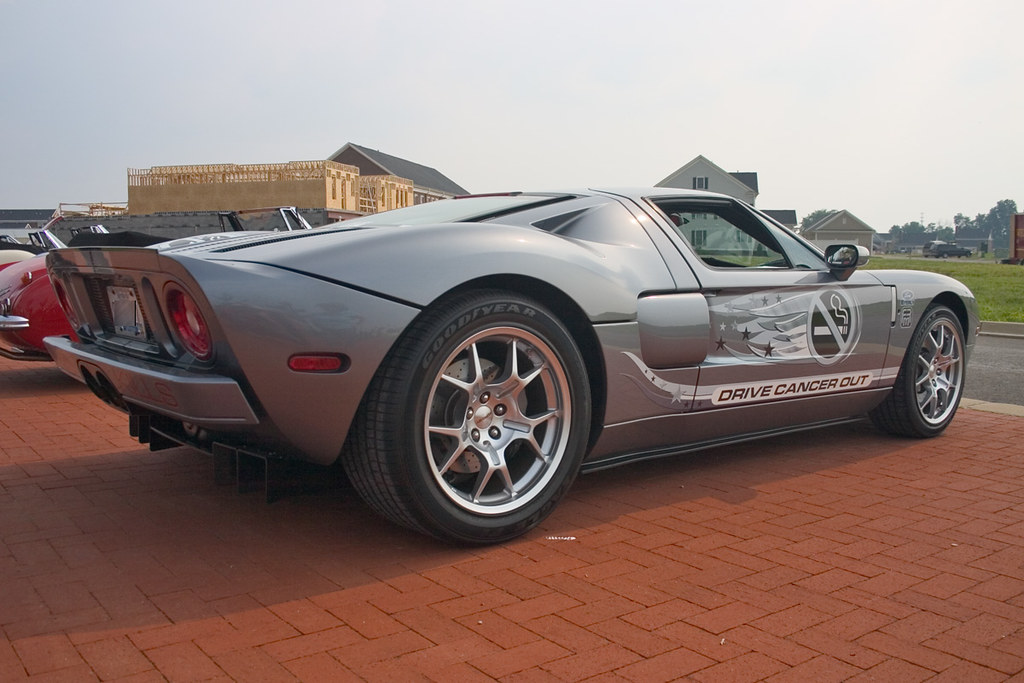
2. **Ford Mustang GT (SN95/S197)**For track day participants who find themselves drawn to American engineering, the S197 Ford Mustang stands out as an exceptional choice. This generation, produced from 2005 to 2014, often finds itself overshadowed by newer editions, yet it provides modern aesthetics and highly capable performance at genuinely bargain prices. The S197 Mustang GT embodies Ford’s successful pony car formula, delivering robust V8 power paired with solid chassis dynamics.
A significant advantage of these Mustangs is the extensive aftermarket support available, making personalization and performance enhancement straightforward. While plenty of examples exist under $10,000, more desirable options typically range from $15,000 to $20,000. If your ambition is to experience substantial V8 power on a limited budget, both the SN95 and S197 Ford Mustangs emerge as top-tier contenders. Their aggressive torque delivery and characteristic roaring soundtrack make them perennial favorites for straight-line acceleration, and with a properly tuned setup, they can also perform admirably on a road course.
The traditional live rear axle, while not ideal for the most intricate technical driving, doesn’t prevent a well-prepared Mustang from challenging lighter, more agile cars on track. Inexpensive parts, vast aftermarket support, and a compelling sub-$8,000 starting price for many examples solidify its position as one of the most powerful-per-dollar machines available. While consumables for a powerful car are naturally more expensive, the availability and affordability of Mustang parts remain unmatched. A V-8 S197 can be acquired for less than $8,000, with SN95 Mustang GTs often under $6,000.
Car Model Information: 2019 Volkswagen Tiguan 2.0T SE 4MOTION
Name: Ford Mustang
Caption: 2018 Ford Mustang GT 5.0
Aka: Ford T5 (Germany)
Manufacturer: Ford Motor Company
Production: March 1964 – present
ModelYears: 1965–present
Class: Unbulleted list
BodyStyle: Unbulleted list
Layout: Front-engine, rear-wheel-drive layout
Categories: 1970s cars, 1980s cars, 1990s cars, 2+2 coupés, 2000s cars
Summary: The Ford Mustang is an American automobile manufactured and marketed by Ford since 1964, as Ford’s longest nameplate in continuous production. Currently in its seventh generation, it is the fifth-best selling Ford car nameplate. The namesake of the “pony car” automobile segment, the Mustang was developed as a highly styled line of sporty coupes and convertibles derived from existing model lines, initially distinguished by its pronounced “long hood, short deck” proportions.
Originally predicted to sell 100,000 vehicles yearly, the 1965 Mustang became the most successful vehicle launch since the 1927 Model A. Introduced on April 17, 1964 (16 days after the Plymouth Barracuda), over 400,000 units were sold in its first year; the one-millionth Mustang was sold within two years of its launch. In August 2018, Ford produced the 10-millionth Mustang; matching the first 1965 Mustang, the vehicle was a 2019 Wimbledon White convertible with a V8 engine.
The success of the Mustang launch led to multiple competitors from other American manufacturers, including the Chevrolet Camaro and Pontiac Firebird (1967), AMC Javelin (1968), and Dodge Challenger (1970). It also competed with the Plymouth Barracuda, which was launched around the same time. The Mustang also had an effect on designs of coupes worldwide, leading to the marketing of the Toyota Celica and Ford Capri in the United States (the latter, by Lincoln-Mercury). The Mercury Cougar was launched in 1967 as a unique-bodied higher-trim alternative to the Mustang; during the 1970s, it included more features and was marketed as a personal luxury car.
From 1965 until 2004, the Mustang shared chassis commonality with other Ford model lines, staying rear-wheel-drive throughout its production. From 1965 to 1973, the Mustang was derived from the 1960 Ford Falcon compact. From 1974 until 1978, the Mustang (denoted Mustang II) was a longer-wheelbase version of the Ford Pinto. From 1979 until 2004, the Mustang shared its Fox platform chassis with 14 other Ford vehicles (becoming the final one to use the Fox architecture). Since 2005, the Mustang has used the D2C platform, unique to the Mustang.
Through its production, multiple nameplates have been associated with the Ford Mustang series, including GT, Mach 1, Boss 302/429, Cobra (separate from Shelby Cobra), and Bullitt, along with “5.0” fender badging (denoting 4.9 L OHV or 5.0 L DOHC V8 engines).
Get more information about: Ford Mustang
Buying a high-performing used car >>>
Brand: Ford Model: Mustang GT
Price: $12,956 Mileage: 115,423 mi.
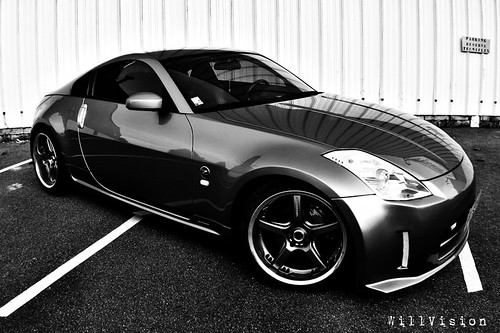
3. **Nissan 350Z**Nissan’s recent introduction of a seventh-generation Z-car has rekindled interest, but for the budget-conscious enthusiast, the fifth-generation 350Z (2003-2009) offers an undeniable sweet spot. Powered by the venerable VQ35DE 3.5-liter V6, this car reliably delivers up to 300 horsepower, making the 350Z an absolute blast to drive, on track or daily. Its rear-wheel-drive configuration and available six-speed manual gearbox emphatically reinforce its true sports car credentials.
Pricing for a track-worthy 350Z typically falls within the $10,000 to $15,000 range, though rare Nismo examples command a premium. The Nissan 350Z effectively blends striking design, balanced performance, and robust V6 power into a cohesive, track-ready package. While heavier than some lightweight rivals, it compensates with 300 hp and a responsive chassis at home when pushed. The distinctive warbling trumpet song of the VQ engine is unmistakable.
With prices often falling below $7,000 for good examples, the 350Z represents a remarkably smart acquisition for both track day rookies and seasoned veterans. When Nissan first unveiled the 350Z in 2003, it distinguished itself with an all-new front-engine, rear-drive platform, shared with potent Nissan and Infiniti models like the G35, demonstrating capability comparable to the esteemed BMW 3 Series in acceleration, handling, and braking. Its sophisticated independent suspension with multilink geometry and aluminum components contribute to its composed nature on track.
Car Model Information: 2004 Nissan 350Z Touring
Name: Nissan 350Z (Z33)
Manufacturer: Nissan
Aka: Nissan Fairlady Z
Production: July 2002–2008 (Coupe),2003–2008 (Roadster)
Assembly: ubl
Designer: Ajay Panchal at Nissan Design America (2000)
Class: Sports car
BodyStyle: hatchback,Roadster (automobile)
Platform: Nissan FM platform
Related: Infiniti G35,Nissan Skyline#V35
Layout: Front mid-engine, rear-wheel drive layout
Engine: Nissan VQ engine#VQ35DE,Nissan VQ engine#VQ35HR
Transmission: Jatco 5R05 transmission,Automatic transmission
Wheelbase: cvt
Length: {{cvt,4303,mm,in
Width: cvt
Height: {{cvt,1318,mm,in
Weight: cvt
Predecessor: Nissan 300ZX
Successor: Nissan 370Z
ModelYears: 2003–2009
Categories: All articles needing additional references, All articles with dead external links, All articles with failed verification, All articles with unsourced statements, Articles needing additional references from August 2011
Summary: The Nissan 350Z (known as Nissan Fairlady Z (Z33) in Japan) is a two-door, two-seater sports car that was manufactured by Nissan Motor Corporation from 2002 until 2009 and marks the fifth generation of Nissan’s Z-car line. The 350Z entered production in 2002 and was sold and marketed as a 2003 model from August 2002. The first year there was only a coupe, as the roadster did not debut until the following year. Initially, the coupe came in Base, Enthusiast, Performance, Touring and Track versions, while the Roadster was limited to Enthusiast and Touring trim levels. The Track trim came with lightweight wheels and Brembo brakes, but its suspension tuning was the same as all other coupes. The Nissan 350Z was succeeded by the 370Z for the 2009 model year, although the roadster was sold alongside the 370Z for 2009.
Get more information about: Nissan 350Z
Buying a high-performing used car >>>
Brand: Nissan Model: 350Z
Price: $19,990 Mileage: 77,910 mi.
Read more about: Beyond the Commute: 14 Cars That Redefine Driving Fun and Handling Perfection for Enthusiasts

4. **Subaru BRZ / Toyota 86 / Scion FR-S**The collective known as the BRZ, FR-S, and 86 represents an outstanding trifecta of effective track day cars, specifically engineered to prioritize handling balance and pure driver engagement over sheer horsepower. Characterized by a remarkably low center of gravity and a meticulously tuned chassis, these vehicles consistently produce predictable and confidence-inspiring results. This inherent predictability makes them excellent tools for aspiring drivers keen on mastering advanced driving techniques.
Beneath their sleek exteriors, the rear-wheel-drive layout and a naturally aspirated four-cylinder engine contribute significantly to their commendable reliability, a crucial factor for track enthusiasts. These “Toyobaru triplets” benefit from robust aftermarket support and are amenable to do-it-yourself wrenching, helping keep running costs in check. The first-generation models (BRZ: 2013-2020, FR-S: 2013-2016) offer compelling affordability, with older, well-maintained versions often costing between $10,000 and $12,000.
Designed from the ground up with enthusiasts in mind, these coupes boast balanced RWD handling and impressive stability, making them ideal out-of-the-box track cars. They might forgo open-top exhilaration, but compensate with a stiffer chassis and practical interior space; a full set of track wheels and tools can fit in the back. Available for under $10,000, they offer exceptional balance, strong community support, and track readiness demanding minimal upgrades. If you seek a Miata alternative with a coupe silhouette and impressive daily-driver practicality, the BRZ, FR-S, or 86 is an excellent choice.
Car Model Information: 2017 Subaru BRZ Series.Yellow
Name: Toyota 86 / Subaru BRZ
Caption: 2022 Toyota GR86 Premium (ZN8)
Manufacturer: Toyota
Aka: unbulleted list
Production: January 2012 – present
ModelYears: 2013–present
Assembly: Ōta, Gunma
Class: Sports car
BodyStyle: fastback,coupé
Layout: Front-engine, rear-wheel-drive
Sp: uk
Categories: 2+2 coupés, 2020s cars, All Wikipedia articles written in British English, All articles with dead external links, All articles with unsourced statements
Summary: The Toyota 86 and the Subaru BRZ are 2+2 sports cars jointly developed by Toyota and Subaru, manufactured at Subaru’s Gunma assembly plant.
The 2+2 fastback coupé has a naturally aspirated boxer engine, front-engined, rear-wheel-drive configuration, 53/47 front/rear weight balance and low centre of gravity; it was inspired by Toyota’s earlier AE86, a small, light, front-engine/rear-drive Corolla variant widely popular for Showroom Stock, Group A, Group N, Rally, Club and drift racing.
For the first-generation model, Toyota marketed the sports car as the 86 in Asia, Australia, North America (from August 2016), South Africa, and South America; as the Toyota GT86 in Europe; as the 86 and GT86 in New Zealand; as the Toyota FT86 in Brunei, Nicaragua and Jamaica and as the Scion FR-S (2012–2016) in the United States and Canada.
The second-generation model is marketed by Toyota as the GR86 as part of the Gazoo Racing family.
Get more information about: Toyota 86
Buying a high-performing used car >>>
Brand: Subaru Model: BRZ
Price: $21,747 Mileage: 54,658 mi.
Read more about: Forever Fun: MotorTrend Ranks the 10 Most Dependable Coupes Built to Last for Years to Come
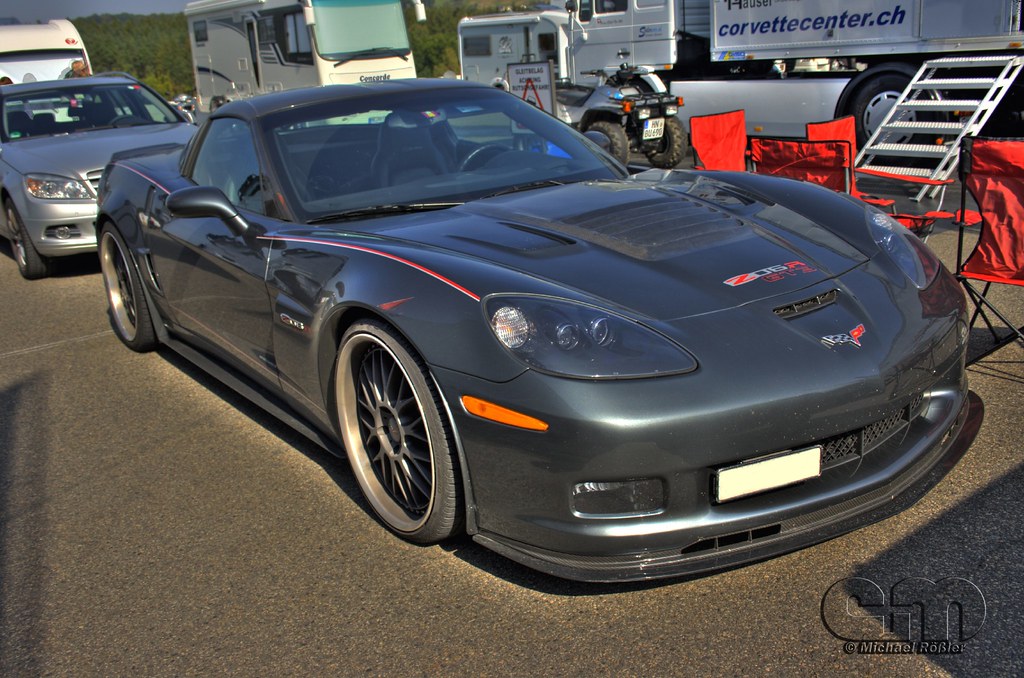
5. **Chevrolet Corvette C5**For adherents of the iconic Bow Tie brand, the Chevrolet Corvette C5 (1997-2004) proudly stands as an exceptionally capable and, crucially, affordable track day option. Its heart is the formidable LS1 V8 engine, which consistently provides substantial power, while the innovative transaxle layout combined with lightweight fiberglass construction creates a remarkably well-balanced platform. This design yields an outstanding power-to-weight ratio, a critical factor for spirited track performance. The factory suspension setup already provides a solid foundation for dynamic driving.
It’s easy to dismiss the notion of an affordable, track-capable Corvette, especially when the latest C8 generation ventures into six-figure pricing territory. However, the C5 unequivocally proves that high-performance doesn’t necessitate a prohibitive budget. You can acquire a C5 coupe for a reasonable $12,000 to $18,000, and for those craving even sharper performance, a 2004 Z06 Corvette can surprisingly be had for under $25,000, making the C5 a genuine performance bargain.
The C5 Corvette undeniably remains the performance-per-dollar king, particularly for enthusiasts whose primary goal is outright speed and blistering lap times. Propelled by its robust LS1 V8 and featuring a chassis renowned for its balance, the C5 feels equally at home conquering a large, sweeping circuit or engaging in high-speed runs. While heavier and more expensive to operate than lighter cars, the C5 delivers a level of supercar-rivalling pace for under $15,000. Its hatchback utility allows for convenient transport of tools and spare parts, cementing the C5 as the best budget rocket for serious weekend warriors.
Car Model Information: 2019 Volkswagen Tiguan 2.0T SE 4MOTION
Name: Chevrolet Corvette (C5)
Manufacturer: Chevrolet
Production: October 1, 1996 – July 2, 2004
ModelYears: 1997–2004
Assembly: Bowling Green, Kentucky
Designer: John Cafaro (1993)
Predecessor: Chevrolet Corvette (C4)
Successor: Chevrolet Corvette (C6)
Class: Sports car
BodyStyle: coupé,Convertible (car),hardtop
Layout: Front-engine, rear-wheel-drive layout#FMR
Platform: GM Y platform
Engine: General Motors LS-based small-block engine#LS1,General Motors LS-based small-block engine#LS6
Transmission: Manual transmission,Automatic transmission
Wheelbase: cvt
Length: cvt
Width: cvt
Height: {{cvt,47.7,in,mm,0
Weight: {{cvt,1472,kg,lb,0
Related: Callaway C12
Categories: 2000s cars, All articles with unsourced statements, Articles with short description, Articles with unsourced statements from August 2024, Articles with unsourced statements from March 2019
Summary: The Chevrolet Corvette (C5) is the fifth generation of the Corvette sports car, produced by the Chevrolet division of General Motors for the 1997 through 2004 model years. Production variants include the high performance Z06. Racing variants include the C5-R, a 24 Hours of Daytona and 24 Hours of Le Mans GTS/GT1 winner. The C5 Corvette was the first GM vehicle to feature the third generation small block “LS” engines. This was the last generation Corvette with Pop-up headlights.
Get more information about: Chevrolet Corvette (C5)
Buying a high-performing used car >>>
Brand: Chevrolet Model: Corvette C5
Price: $12,956 Mileage: 115,423 mi.
Read more about: Timeless Icons: 14 Classic 1960s Cars That Continue to Captivate Enthusiasts and Turn Heads
6. **BMW 3 Series (E36/E46)**The BMW E36 M3 occupies a unique space, appealing to enthusiasts and collectors as the second generation of the revered M3. Marketed in the U.S. from 1995 through 1999, the E36 M3 draws motivation from a naturally aspirated inline-six engine, free from turbo complexities. This engine, combined with classic rear-wheel-drive dynamics, delivers an exceptionally rewarding driving experience, making it a favorite for purists.
The factory suspension of the E36 M3 is surprisingly well-suited for track use. However, most examples today feature upgraded adjustable dampers from previous track-minded owners. A track-worthy E36 will generally set you back $8,000 to $14,000, with final price influenced by condition. It’s prudent to budget for potential maintenance and repairs, particularly for common areas like the cooling system and differential.
The E46-generation BMW 3 Series, specifically models like the 330i, presents another compelling proposition, offering a distinctive blend of comfort, precision, and enduring style. In its 330i trim, this generation boasts strong out-of-the-box performance and a near-perfect 50/50 weight balance, ideal for dynamic handling. While ongoing upkeep costs might be higher than Japanese counterparts, the driving reward is a vehicle that performs far better on track than its modest price suggests. Considering such a capable car can often be acquired for under $5,000, the E46 stands as one of the best rear-drive platforms for honing track driving skills, benefiting from strong community support and tuning potential.
Continuing our journey into the world of budget-friendly track machines, we uncover five more gems that offer distinct driving experiences, impressive modification potential, and suitability for various skill levels. These vehicles further prove that the thrill of the circuit is well within reach, blending raw performance with essential practicality for weekend warriors.
Car Model Information: 2013 BMW M3 Base
Name: BMW M3
Caption: 2021 BMW M3 Competition (G80)
Manufacturer: BMW M
Production: unbulleted list
Class: Compact executive car
Layout: unbulleted list
Related: unbulleted list
Categories: 1990s cars, 2000s cars, 2010s cars, 2020s cars, All Wikipedia articles written in British English
Summary: The BMW M3 is a high-performance version of the BMW 3 Series, developed by BMW’s in-house motorsport division, BMW M GmbH. M3 models have been produced for every generation of 3 Series since the E30 M3 was introduced in 1986.
The initial model was available in a coupé body style, with a convertible body style made available soon after. M3 saloons were offered initially during the E36 (1994–1999) and E90 (2008–2012) generations. Since 2014, the coupé and convertible models have been rebranded as the 4 Series range, making the high-performance variant the M4. Variants of the 3 Series since then have seen the M3 produced as a saloon, until 2020, when the M3 was produced as an estate (Touring) for the first time, alongside the saloon variant.
Get more information about: BMW M3
Buying a high-performing used car >>>
Brand: BMW Model: M3
Price: $47,000 Mileage: 35,490 mi.

7. **Porsche Boxster (986)**To experience the pure joy of swinging a mid-engine machine around a track, the first-generation Porsche Boxster (986) presents an undeniably tempting proposition. This model, produced from 1997 to 2004, is built upon genuine sports car architecture, featuring a mid-engine layout that is universally lauded for optimal weight distribution. This design philosophy translates directly into superior handling characteristics, delivering a truly excellent balance and precise steering feel both on and off the course.
While the 986 Boxster offers surprising affordability, potential buyers must exercise caution and conduct thorough research. The model has a documented history of intermediate shaft (IMS) bearing problems and rear main seal leaks, issues that, if unaddressed, can lead to significant repair costs. It is highly advisable to seek out examples that come with documented evidence of repairs in these critical areas, ensuring peace of mind for future track endeavors.
Despite these potential pitfalls, a well-sorted 986 Boxster remains a phenomenal value for the performance it delivers. Its nimble chassis and communicative steering make it an absolute delight to drive, offering a level of engagement typically associated with far more expensive sports cars. The auditory experience of its flat-six engine only adds to the allure, creating an immersive driving environment perfect for honing track skills.
Pricing for the first-generation Boxster typically ranges from $10,000 to $18,000. The upper end of this spectrum is generally associated with newer model years and the more powerful Boxster S variants, which offer enhanced performance for those seeking an even more potent track tool. For a legitimate Porsche track experience without breaking the bank, the 986 stands out as a unique and rewarding option.
Car Model Information: 2014 Porsche Boxster Base
Name: unbulleted list
Caption: Porsche Boxster Spyder (718)
Manufacturer: Porsche
Aka: unbulleted list
Production: unbulleted list
Assembly: unbulleted list
Class: Sports car
BodyStyle: unbulleted list
Related: unbulleted list
Layout: Rear mid-engine, rear-wheel drive layout
Predecessor: Porsche 968
Categories: All Wikipedia articles written in British English, All articles needing additional references, All articles with dead external links, All articles with unsourced statements, Articles needing additional references from August 2025
Summary: The Porsche Boxster and Cayman are mid-engine two-seater sports cars manufactured and marketed by German automobile manufacturer Porsche across four generations—as a two-door, two-seater roadster (Boxster) and a three-door, two-seater fastback coupé (Cayman).
The first generation Boxster was introduced in 1996; the second generation Boxster and the Cayman arrived in late 2005; and the third generation launched in 2012. Since the introduction of the fourth generation in 2016, the two models have been marketed as the Porsche 718 Boxster and Porsche 718 Cayman.
The nameplate Boxster is a portmanteau of boxer, a reference to its flat or boxer engine, and Speedster, a nod to the original Porsche Speedster of the 1950’s. The nameplate Cayman is an alternative spelling of caiman, a member of the alligator family.
In May 2025 Porsche North America confirmed the rumours that global “production for all current 718 Boxster and 718 Cayman variants, including RS models, is scheduled to end in October of” 2025. Porsche CEO Oliver Blume has confirmed future production of full-electric replacements but said they will arrive in the “medium term.”
Get more information about: Porsche Boxster and Cayman
Buying a high-performing used car >>>
Brand: Porsche Model: Boxster
Price: $33,880 Mileage: 64,592 mi.
Read more about: Beyond the Hype: 11 Unbeatable Sports Cars for Budget-Conscious Enthusiasts Seeking Long-Term Reliability and Driving Thrills

8. **Honda S2000**The Honda S2000, manufactured from 2000 to 2009, commands a near cult-like following within the enthusiast community, a testament to its clever fusion of lightweight roadster packaging and meticulous Honda engineering. This car is renowned for its high-revving 2.0- and 2.2-liter four-cylinder engines, which deliver their output through a remarkably linear, high-RPM power band. This characteristic distinctly rewards engaging driving, demanding precision and commitment from the driver to extract its full performance potential.
Beyond its distinctive powertrain, the S2000 benefits from enthusiast-friendly chassis tuning and a sophisticated double-wishbone suspension system. This combination provides exceptional feedback and control, allowing drivers to truly feel connected to the road and understand the car’s limits. Furthermore, Honda’s long-standing reputation for reliability and durability, coupled with excellent parts availability, makes the S2000 an especially appealing choice for track day participants concerned about long-term ownership costs and maintenance.
However, the greatest challenge for budget-conscious enthusiasts looking for an S2000 lies in finding an example that doesn’t blow the budget or hasn’t been over-modified. Its immense popularity and track prowess mean that many have been heavily customized or driven hard. Despite this, with careful shopping, it is possible to find good options, typically with around 100,000 miles, for approximately $20,000.
For those willing to stretch their budget closer to the $25,000 cap, examples with five digits of mileage, indicating lower wear, can often be secured. The S2000 remains a fantastic choice for drivers who appreciate a finely tuned, naturally aspirated engine, precise handling, and the exhilaration of an open-top roadster on the track, all backed by Honda’s legendary engineering.
Car Model Information: 2004 Honda S2000 Base
Name: Honda S2000
Manufacturer: Honda
Production: 1999–2009 (110,673 produced)
Class: Sports car
Layout: Front-engine, rear-wheel-drive layout#Front mid-engine, rear-wheel-drive layout
BodyStyle: Roadster (automobile)
Designer: Shigeru Uehara
Caption: 2005 Honda S2000 (AP2)
Predecessor: Honda S800
Categories: 2000s cars, All articles containing circular references, All articles lacking reliable references, Articles lacking reliable references from May 2024, Articles with short description
Summary: The Honda S2000 is a front-mid engine open top sports car that was manufactured by Japanese automobile manufacturer Honda, from 1999 until 2009. First shown as a concept car called the SSM at the Tokyo Motor Show in 1995, the production version was launched on April 15, 1999, to celebrate the company’s 50th anniversary. The S2000 is named for its engine displacement of two liters, while “S” stood for “sports” carrying on in the tradition of the S500, S600, and S800 roadsters of the 1960s.
Several revisions were made throughout the car’s production life, including changes to the engine, gearbox, suspension, interior and exterior. Officially two variants exist: the initial launch model was given the chassis code AP1; though cosmetically similar, the facelifted version, known as the AP2 in North America and Japan, incorporated significant changes to the drivetrain and suspension. Production of the S2000 ceased on August 19, 2009.
The Honda S2000 was notable for its exceptional specific power output of about 92 kW (124 hp) per liter, or about two horsepower per cubic inch, the highest of any mass production, naturally aspirated car, until 2010.
Get more information about: Honda S2000
Buying a high-performing used car >>>
Brand: Honda Model: S2000
Price: $28,995 Mileage: 72,541 mi.
Read more about: Expert Insights: Understanding Why Baby Boomers Are Downsizing Their Classic Car Collections Amidst Market Shifts

9. **Volkswagen Golf GTI Mk5**For those who envision their ideal track day machine as a perfect blend of affordable racing prowess and renowned German engineering, the Mk5 Golf GTI emerges as a compelling go-to vehicle. Though technically not carrying the “Golf” label in the U.S. market, this fifth-generation GTI brought a new level of refinement and capability to the hot hatch segment. Its front-wheel-drive layout, while requiring different driving techniques compared to RWD cars, also lends itself to being a great daily driver, particularly adept in challenging conditions such like rain or snow.
The heart of the Mk5 GTI’s appeal lies in its turbocharged, four-cylinder engine, which robustly delivers 200 horsepower. This power output, combined with the GTI’s agile chassis, makes it an especially fun car to drive, providing plenty of excitement on a tight circuit or winding road. The performance-oriented nature of the hot hatch means it’s ready to tackle track duties with enthusiasm straight from the factory, offering a surprisingly potent package for its price point.
Drivers can expect to get a lot of “bang for their buck” with an Mk5 GTI, with many examples available for around $5,000. This highly accessible entry price frees up crucial funds for essential track consumables and potential performance enhancements. However, it is prudent to set aside an extra portion of the budget for routine maintenance and any necessary repairs, as German engineering, while sophisticated, can sometimes entail higher upkeep costs than some Japanese counterparts.
Despite the potential for higher maintenance, the Mk5 GTI stands as a versatile choice for enthusiasts seeking a practical daily driver that can also hold its own on track. Its strong community support and wealth of aftermarket modifications further solidify its position as an outstanding budget track car, delivering both German driving dynamics and genuine track capability.
Car Model Information: 2015 Nissan Altima 2.5 SL
Name: Volkswagen Golf
Caption: Volkswagen Golf Mk8
Manufacturer: Volkswagen
Production: 1974–present
Class: Compact car
Predecessor: Volkswagen Beetle
Successor: Volkswagen ID.3
Alt: grey car (hatchback)
Categories: 1980s cars, 1990s cars, 2000s cars, 2010s cars, 2020s cars
Summary: The Volkswagen Golf () is a compact car/small family car (C-segment) produced by the German automotive manufacturer Volkswagen since 1974, marketed worldwide across eight generations, in various body configurations and under various nameplates – including as the Volkswagen Rabbit in the United States and Canada (Mk1 and Mk5), and as the Volkswagen Caribe in Mexico (Mk1).
The original Golf Mk1 was a front-engined, front-wheel drive replacement for the air-cooled, rear-engined, rear-wheel drive Volkswagen Beetle. Historically, the Golf is Volkswagen’s best-selling model and is among the world’s top three best-selling models, with more than 35 million units sold as of 2019.
Initially, most Golfs were hatchbacks, with the three-door version being somewhat more popular than the five-door. Other variants include an estate (Variant, from 1993), convertible (Cabriolet or Cabrio, from 1979), and a Golf-based saloon called the Jetta, Vento (from 1992), or Bora (from 1999). The Golf covers economy to high-performance market segments.
The Golf has won awards, including the World Car of the Year in 2009, with the Mk6 and in 2013 with the Mk7. Along with the Renault Clio and the Vauxhall Astra, the Golf is one of only three cars to have won European Car of the Year twice, in 1992 and 2013. The Golf has made the annual Car and Driver 10Best list multiple times. The Mk7 won the Motor Trend Car of the Year award in 2015, and the Mk1 GTI also won the award in 1985. The Mk4 won for the best-selling car in Europe in 2001.
Get more information about: Volkswagen Golf
Buying a high-performing used car >>>
Brand: Volkswagen Model: Golf GTI
Price: $9,000 Mileage: 113,276 mi.
Read more about: Beyond the Commute: 14 Cars That Redefine Driving Fun and Handling Perfection for Enthusiasts
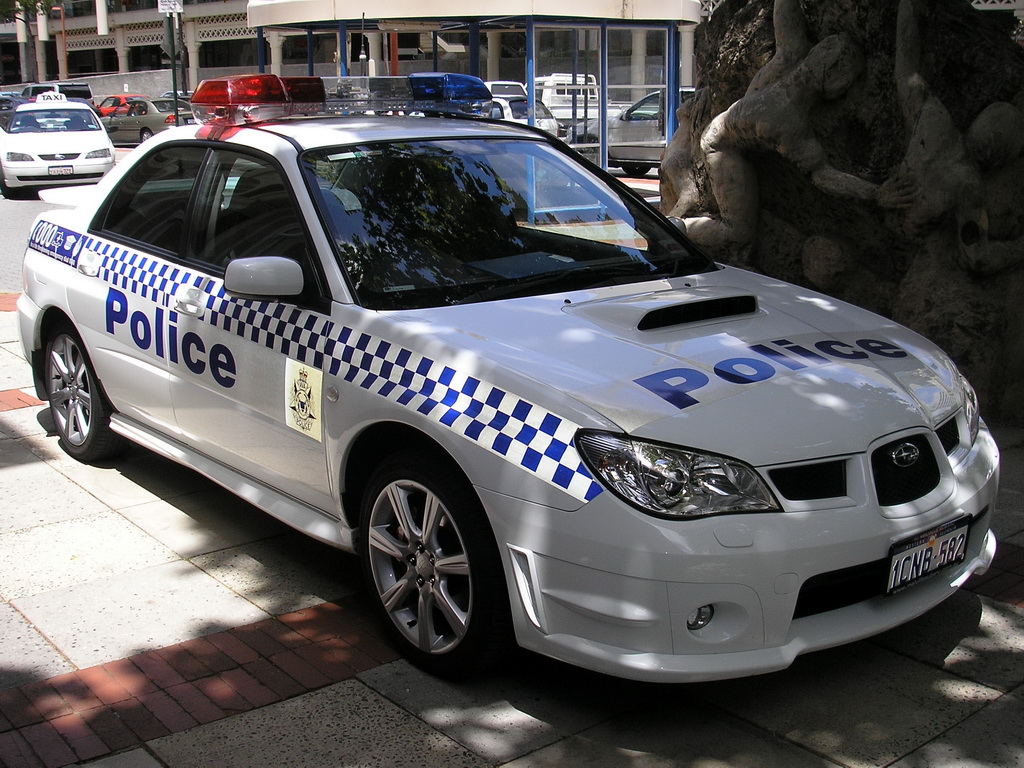
10. **Subaru WRX (2001–2007)**If your track day aspirations include all-weather capability and the exhilarating rush of turbocharged power, then the early generations of the Subaru WRX—encompassing the iconic Bugeye, Blobeye, and Hawkeye models—deliver an experience unlike any other on this list. These rally-bred machines, produced from 2001 to 2007, feature legendary all-wheel-drive traction, making them incredibly versatile for both daily driving duties and challenging wet track days.
The WRX offers respectable stock horsepower figures, providing a solid foundation for spirited driving. The allure of aftermarket tuning is strong with these models, promising significant power gains. However, caution is advised, as aggressive modifications can unfortunately lead to fragile transmissions if not carefully managed. It’s a balance between extracting more performance and preserving the car’s inherent durability, especially under the strenuous conditions of track use.
With prices often dipping below $8,000, a WRX represents exceptional value, offering year-round usability and a distinctive rally-bred character. Its broad driving envelope truly shines when grip is low, positioning it as the undisputed “go-to car” when rain drenches the track. The ability to maintain composure and traction in adverse conditions is a unique advantage not typically found in other budget track cars.
For drivers considering an all-wheel-drive platform, the WRX offers a unique learning curve for intricate driving dynamics. While some argue against AWD for pure learning, the sheer fun of having abundant grip and turbo power is undeniable. Just remember to be gentle on the gearbox, and this Subaru will reward you with unmatched versatility, practical wagon variants (a touch under 3,100 pounds), and an abundance of “grins per mile.”
Car Model Information: 2018 Subaru WRX Base
Name: Subaru WRX
Caption: 2022 Subaru WRX GT
Aka: Subaru Impreza WRX (1992–2014)
Production: 1992–2014 (Impreza-based models),2015–present (standalone models)
Assembly: Ōta, Gunma
Layout: Front-engine, four-wheel-drive layout
Manufacturer: Subaru
Related: Subaru Levorg,Subaru WRX STI
Class: Sport compact
BodyStyle: Sedan (automobile)
Categories: 2020s cars, All-wheel-drive vehicles, All Wikipedia articles written in British English, All articles with unsourced statements, Articles with short description
Summary: The Subaru WRX is an all-wheel drive sport compact car manufactured by the Japanese automaker Subaru, originally based on the Impreza created for the World Rally Championship in 1992. Subaru claimed the name WRX stands for “World Rally eXperimental”. Starting with the 2015 models, the WRX lineup has been split from the Impreza, with a different body style that is not offered as an optional hatchback/wagon, being introduced as the separate Levorg model.
Get more information about: Subaru WRX
Buying a high-performing used car >>>
Brand: Subaru Model: WRX
Price: $14,980 Mileage: 117,516 mi.
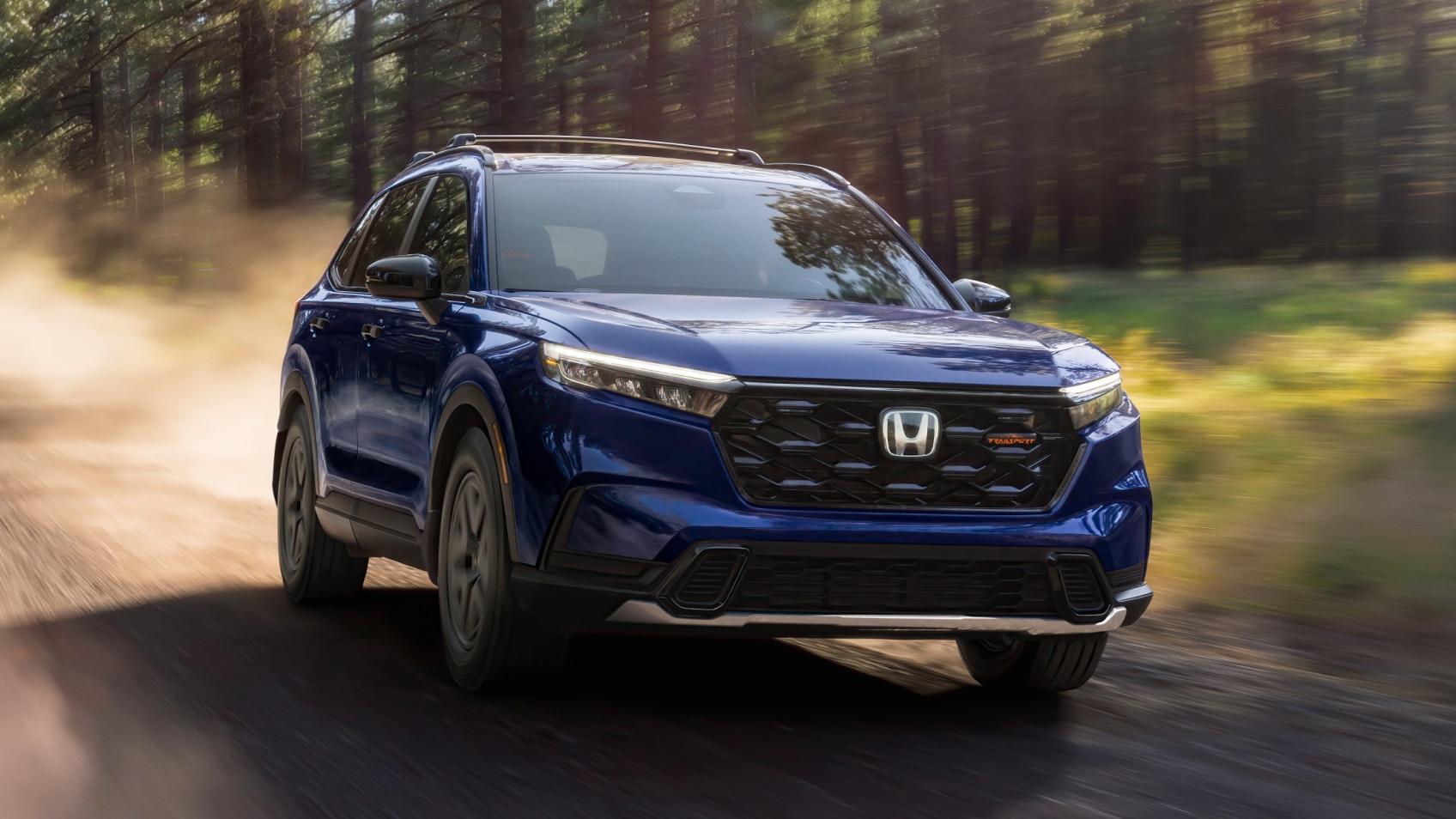
11. **Honda Fit (2007–2013 GD3, GE8)**On paper, the Honda Fit might not immediately scream “track weapon,” yet for those who delve deeper, it quickly reveals itself as one of the smartest and most unassuming budget track choices available. Its remarkably low curb weight, coupled with nimble handling characteristics, makes it shockingly capable on autocross courses or tight circuits. This often-overlooked hatchback delivers a level of agility and responsiveness that belies its humble origins.
Beyond its surprising performance, the Fit stands out for its exceptional cost-effectiveness. It is dirt cheap to run, with consumables being inexpensive, and its engine is famously frugal with fuel. The inclusion of a manual handbrake and quick, direct steering keeps things incredibly fun and engaging, providing a genuine connection to the road. With prices for these generations (GD3 and GE8) often falling under $5,000, the value proposition is simply irresistible.
The Honda Fit truly embodies the spirit of a practical, yet potent, track car. It is arguably one of the best cars ever when accounting for real-world cost, reliability, handling, and cavernous practicality. Weighing well under 2,600 pounds, even for the heavier second-generation models, it remains the last truly lightweight Honda hatch, and arguably the most practical. The fold-flat seats allow for hauling everything you or your buddies will need at the track, from tools to spare tires, making it the most utilitarian option on this list.
Indeed, racers from around the world swear by the Fit’s nimbleness and friendly handling, whether they are running Tsukuba, Laguna Seca, or Gingerman, all while easily achieving over 40 mpg on the highway. Parts are among the cheapest of any race-worthy car, and its playful nature means the humble Fit can be more fun in a parking lot than a brand-new FL5 Civic Type R. For those who prioritize utility, joyful handling, and absolute cost-effectiveness, the Fit is an unassuming but elite track contender.
Selecting the ultimate track day vehicle is a deeply personal endeavor, requiring an honest assessment of your priorities and current experience level. Beginners often thrive in lower-powered cars that emphasize handling over raw speed, allowing for the development of fundamental skills. More seasoned drivers, conversely, might gravitate towards platforms offering significant modification potential, pushing the boundaries of performance. It’s crucial to look beyond the initial purchase price and factor in the total ownership costs, including insurance, ongoing maintenance, and vital safety equipment, to ensure your passion remains sustainable.
Car Model Information: 2020 Honda Fit LX
Name: Honda Fit/jazz
Manufacturer: Honda
Aka: Dongfeng Honda
Production: June 2001 – present
Class: Subcompact car
BodyStyle: hatchback
Layout: Front-engine, front-wheel-drive layout,Front-engine, four-wheel-drive layout
Platform: Honda Global Small Car
Predecessor: Honda Logo
Successor: Honda City#GN
Categories: 2010s cars, 2020s cars, ASEAN NCAP superminis, All-wheel-drive vehicles, All Wikipedia articles written in British English
Summary: The Honda Fit (Japanese: ホンダ・フィット, Hepburn: Honda Fitto) or Honda Jazz is a small car manufactured and marketed by Honda since 2001 over four generations. It has a five-door hatchback body style and is considered a supermini in the United Kingdom, a subcompact car in the United States, and a light car in Australia. Marketed worldwide and manufactured at ten plants in eight countries, sales reached almost 5 million by mid-2013. Honda uses the “Jazz” nameplate in Europe, Oceania, the Middle East, Africa, Hong Kong, Macau, Southeast Asia and India; and “Fit” in Japan, Sri Lanka, China, Taiwan and the Americas.
Sharing Honda’s global small car platform with the City, Airwave, first-generation Mobilio, Freed and HR-V/Vezel, the Fit is noted for its one-box or monospace design; forward-located fuel tank; configurable seats that fold in several ways to accommodate boot space in varying shapes and sizes— and boot volume competitive to larger vehicles.
Honda released hybrid petrol-electric versions of the Fit in Japan in October 2010 and in Europe in early 2011. In 2012, Honda released the Fit EV in the United States and Japan, a limited-production all-electric version based on the second-generation, widely regarded as a compliance car.
The fourth-generation model released in 2019 is currently sold in Japan, Europe, China, Taiwan, South Africa, Brunei and Singapore. Starting from 2020, the model was phased out in most Southeast Asian and Latin American countries, to be replaced by the larger City Hatchback, while it was withdrawn entirely from the North American market due to falling demand within the subcompact segment.
Get more information about: Honda Fit
Buying a high-performing used car >>>
Brand: Honda Model: Fit
Price: $16,930 Mileage: 70,292 mi.
Ultimately, your choice should resonate with your intended tracks and personal driving goals. While vehicle modifications offer incremental gains, most participants discover that consistent skill development provides far greater improvements to lap times and overall enjoyment. Many enthusiasts leverage stable mounting solutions like SUPERMOUNTS to capture valuable feedback footage, documenting their progression and refining their techniques. Whether you lean towards the lightweight agility of a Miata, the brute force of a Corvette, or the unique character of any gem on this list, dedicated practice and smart choices are the true accelerators of your track day journey. Get out there, embrace the challenge, and unlock the full potential of both your chosen machine and your driving spirit.

